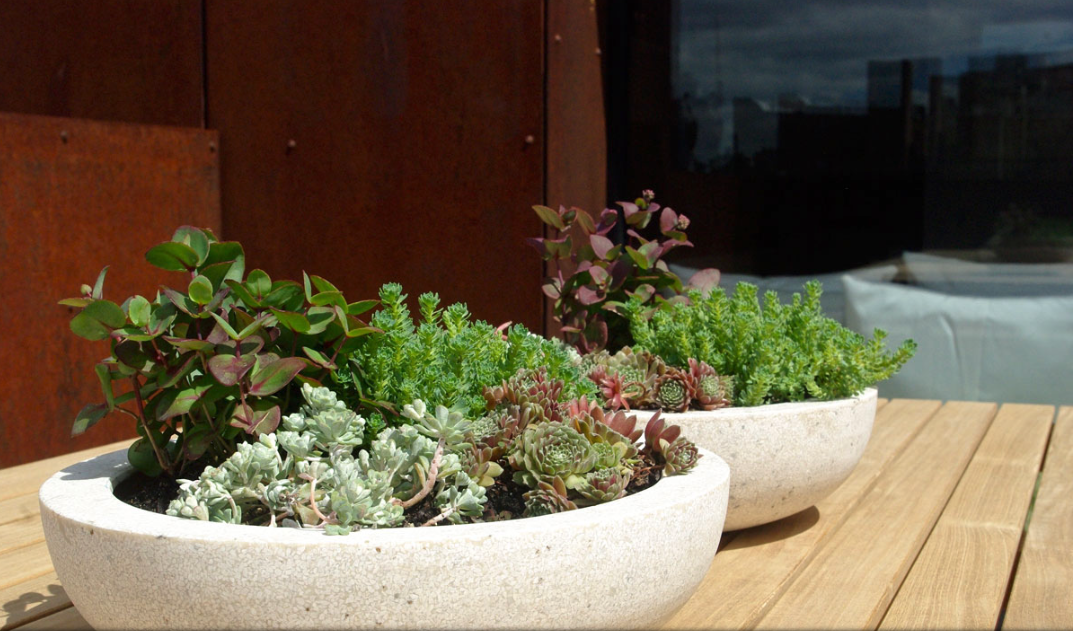Six Urban Gardening Tips From Brooklyn’s Greenest Thumbs
Even city dwellers need a little green in their lives. A selection of plants can make your backyard, deck, rooftop, countertop, or planter box feel like an urban oasis. If you’re not experienced in plant care, however, the idea of raising your own crop of ferns and flowers can seem daunting. If you’re wondering how to…
Even city dwellers need a little green in their lives. A selection of plants can make your backyard, deck, rooftop, countertop, or planter box feel like an urban oasis. If you’re not experienced in plant care, however, the idea of raising your own crop of ferns and flowers can seem daunting.
If you’re wondering how to get started with your urban garden, this post is for you. We’ve spoken to the most skilled green thumbs in Brooklyn — the gardeners and landscape designers of Brownstoner’s Home Pros. Following are our experts’ top tips for choosing the right plants and keeping them healthy.
Tip #1 – Don’t overwater your plants

“Selecting plants based on the natural sunlight they’ll be receiving is key, even more important than watering. Overwatering is the quickest way to kill a plant, so feel the soil to gauge whether it’s thirsty. In this space, a palm tree, philodendron and snake plant all do well with plenty of light. That said, snake plants are versatile and are great low-light plants, making them ideal for city dwellers.” – Lisa, Leaf and June
Photo by Erica Gannett.
Tip #2 – Plants with similar needs should live together
 Photo by Groundworks Inc.
Photo by Groundworks Inc.
“When considering plant placement, consider the watering needs of each plant and plant similar things together: water loving plants with water loving plants and dry, arid plants with dry, arid plants. In this way, the design is resilient and you’re creating a natural, conditioned landscape that holds together.” – Alice, Groundworks Inc.
Tip #3 – Place your plants according to the light exposure in your space
 Photo by Shaun Smith
Photo by Shaun Smith
“In a setting like this sunny yard with western exposure, choose a hearty, drought-tolerant plant that can withstand the heat of the day. Then set the irrigation system accordingly, giving the plants a soak before sunrise so they had plenty of water to last through sunlight hours.” – Sera, Red Fern Brooklyn
Tip #4 – Choose plants that are easy to take care of
“Some plants perform best when nearly forgotten about, such as sedums and succulents. These plants need minimal watering, and prefer to stay on the drier side, so resist the urge to water them constantly.” – Katherine, Staghorn NYC
Tip #5 – Evergreen plants help sculpt your garden
 Photo by The Artist Garden
Photo by The Artist Garden
“When you design your garden, always have some evergreens in the overall scheme of the design. They are a great sculptural element in the garden and they last throughout the year. For a fabulous look in early spring try daffodils, hyacinth, various kinds of tulips, crochets, and don’t forget the allium bulbs!” – James, The Artist Garden
Tip #6 – Assess winter damage in your garden
 Photo by Modern Urban Design
Photo by Modern Urban Design
“Snow and sogginess from winter strains wood and cause raised beds, fences, and trellises to rot out and give way. Winter damage is easiest to repair in early spring, with less growth to work around and fewer roots to disturb. Weed your garden in early spring while roots are shallow and accessible, and mulch heavily (at least 3 inches of mulch). Don’t scrimp on mulch. I recommend using cardboard under the mulch, which encourages worms and improves soil health.” – Jon, Modern Urban Design
These tips are just the beginning of great plant and garden care. If your garden could use some TLC from an expert, visit Brownstoner Home Pros — and happy planting! [blankslate_pages id=”d53b1abeeea17d, d543c232a2fa19, d54e51eab75507, d54b58b93cf195, d53605cba4a321, d53a08f976f740″ type=”card” show_photo=”true” utm_content=””][/blankslate_pages]







What's Your Take? Leave a Comment